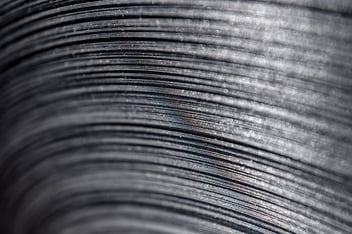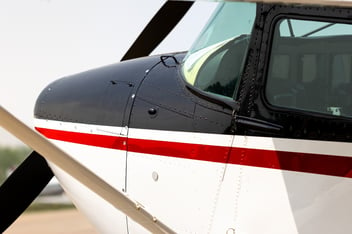Aircraft corrosion, in its many forms, can undermine the integrity of aircraft designs, leading to structural weakness, compromised safety and costly repairs. One of the more insidious types of corrosion, fretting corrosion, can occur quietly, yet cause severe damage to aircraft structures and systems. In order to combat this type of corrosion, engineers need a clear understanding of what it is, why it happens, how it affects aircraft, and what can be done to prevent it.
What is fretting corrosion?
Fretting corrosion is a form of wear and oxidation that occurs at the contact surfaces between two materials under load and subject to minute relative motion. Unlike other corrosion types that are often caused by environmental exposure alone, fretting corrosion is mechanical in nature, developing where components rub against one another under vibration or cyclic loading.
In aircraft, where high vibration and dynamic loading are the norm, fretting corrosion is a persistent challenge, especially in bolted or screwed joints, landing gear systems and engine components.
Causes of fretting corrosion in aircraft
Several unique conditions make aircraft particularly susceptible to fretting corrosion.
Micro-movements between mating surfaces
Aircraft joints, especially those subject to fluctuating loads and vibrations, experience microscopic motion. These movements repeatedly break the protective oxide layers on the metal surface, allowing oxidation and wear to take hold simultaneously.
Vibrational stress
From jet engine resonance to airframe turbulence, aircraft operate in vibrationally rich environments. The cyclical forces exacerbate micro-movement at interfaces, accelerating fretting conditions.
Use of lightweight metals
Modern aerospace designs use materials like aluminium or titanium to reduce weight. Whilst beneficial for fuel efficiency, these materials have lower hardness and wear resistance, making them especially vulnerable to fretting when joined without protective solutions.
High-load conditions
Bolted or screwed joints that experience high tensile or shear loads can produce localised pressure at contact points, fostering the mechanical abrasion needed to initiate fretting.
Effects of fretting corrosion
Fretting corrosion can have a number of detrimental effects on aircraft if left unchecked.
- Reduced fatigue life: Surface damage from fretting acts as a nucleation point for cracks, significantly lowering the fatigue strength of components.
- Structural degradation: Critical parts like turbine blades, fuselage joints or fastener holes can suffer wear that compromises structural integrity.
- Loss of joint integrity: In fastened joints, fretting can enlarge bolt holes or weaken threads, leading to loosening or outright failure during operation.
- Maintenance burden: Components affected by fretting often require replacement or costly repair, increasing aircraft downtime.
Key solutions to combat fretting corrosion in aircraft
A range of strategies can be used to mitigate fretting corrosion in aircraft, from design choices to materials and joining solutions.
1. Surface treatments
Applying coatings like anodising or cadmium plating can offer temporary protection. However, surface treatments alone may not withstand continuous mechanical motion under load.
2. Material selection
Choosing wear-resistant alloys or composites helps, but can significantly increase cost and weight, undermining efficiency targets in aerospace design.
3. Mechanical design improvements
Reducing joint movement through preload optimization or adding damping materials can help. Yet in practice, these adjustments are limited by space, weight, and operational complexity.
Wire thread inserts - a proven method to prevent fretting corrosion in mechanical joints
Among the most effective countermeasures for fretting corrosion is the use of wire thread inserts, a solution that both protects and enhances mechanical joints, especially in high-vibration environments like aerospace.
Wire thread inserts are helically coiled fasteners installed into tapped holes. When a bolt or screw is driven in, the insert flexes radially and axially, spreading load and tension uniformly across the joint. This eliminates the stress concentrations and micro-movements that typically lead to fretting wear.
Why they’re ideal for aerospace applications
- Superior load distribution: Dissipates tension across the entire threaded length, reducing localised pressure that drives fretting.
- Enhanced wear resistance: Acts as a buffer between bolt and parent material, minimising contact wear and prolonging joint lifespan.
- Vibration resistance: Ensures a secure and stable fastening, preventing loosening from flight-induced vibrations.
- Corrosion protection: Custom finishes (like cadmium or silver plating) and materials (such as Inconel or Nitronic 60) add resistance to galvanic and environmental corrosion, offering a dual benefit.
- Support for lightweight materials: Enables the safe use of aluminium, magnesium and titanium by reinforcing soft threads and preventing fatigue failure.
Partner with an industry leader in preventing aircraft corrosion
Fretting corrosion is a critical threat to aircraft integrity, especially when lightweight materials are used. Without the right protection, it can lead to fatigue failures, structural degradation, and increased maintenance demands.
At KATO® Advanex, we specialise in the manufacture of high-performance wire thread inserts designed specifically for the aerospace industry. Our inserts are available in both Tanged and Tangless® variants, and in a wide range of materials and finishes to match the harshest of operational environments.
From resisting fretting corrosion in wing components to ensuring the integrity of fastened joints in cabin interiors, our inserts are engineered to deliver strength, reliability and longevity. Better yet, our Tangless® designs eliminate foreign object debris (FOD) risks, another key requirement in aerospace.
To find out more about our products and how they can enhance and protect your aircraft designs, download our guide below.








.jpg?width=352&name=Shutterstock_285892688%20(1).jpg)
.jpg?width=352&name=KATO%20PLANE%20(2).jpg)


